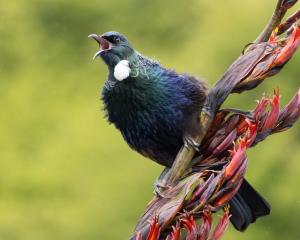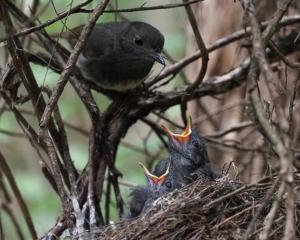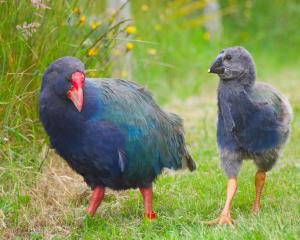Orokonui Stream boasts a treasure trove of mysterious and elusive native freshwater species that have previously evaded the public eye, as Lan Pham reports. Tragically, most of them are disappearing from waterways throughout the country.
Picture this: enveloped by native bush and bird life, you weave your way along the banks of Orokonui Stream, which burbles down the main gully of Orokonui Ecosanctuary and along the valley floor to the estuary.
At first glance the pristine clear water reveals nothing but cobbles and boulders - a seemingly lifeless stream. But don't let the ''vacant'' water fool you.
Look into the depths of the dark pools and the shallow bubbling riffles and you may glimpse a flash or a fin of some rather astounding native fish. We generally encounter them fried!
They are whitebait, in fact. But there is much more to these google-eyed fish than first meets the visitor's eye.
Whitebait are actually the juvenile forms of five species from a family of native fish called galaxiids. This ancient Gondwanan family was named by discoverers who romantically likened the intricate gold patterns on their back to a ''galaxy'' of stars.
What also differentiates them from other fish families is the fact they do not have scales. Instead, they have enviably smooth, almost gelatinous, skin upon which they showcase their galactic gold, silver and brown markings.
They develop these markings if they manage to dodge the whitebait nets or other threats to their survival as they grow into their adult galaxiid forms.
Four galaxiid species dart and lurk within Orokonui Stream and many other coastal streams around Dunedin. The first and arguably most impressive is the giant kokopu (Galaxias argenteus).
As the name suggests, these cryptic fish are the giants of our small waterways. They can grow up to half a metre in length. The particularly striking gold patterns on their bodies have been likened to Egyptian hieroglyphics.
Next we have koaro (Galaxias brevipinnis) and banded kokopu (Galaxias fasciatus). Climbing extraordinaires, these two galaxiid species are the Sir Edmund Hillarys of the freshwater world. The young use their strong fins and the surface tension of wet rocks to scale giant waterfalls to reach upstream habitats.
Banded kokopu had their moment in the spotlight a few years ago in the ODT when three juveniles were discovered on the roof of John Wickliffe House in Dunedin, having scaled the vertical stormwater drainpipes. They were spotted swimming around in a puddle on the roof by a surprised passerby.
Orokonui's fourth galaxiid species is the inanga (Galaxias maculatus), the most common of the whitebait species. These streamlined galaxiids are distinguished by flashy silver streaks along their bodies, and are usually seen swimming in shoals.
Amazingly, they lay their eggs out of water high up on the riverbank among grass by taking advantage of unusually high spring tides created by the gravitational pull of the moon in autumn.
The next big tide sweeps the eggs out into Blueskin Bay and onwards to the sea, from where they return six months later in great shoals from the sea as whitebait.
Living alongside our galaxiids is a colourful circus of native fish and invertebrates not usually associated with the typically muted palette of our native species. There are bluegill bullies, which have bright blue iridescent gill-rays and redfin bullies, which have war paint colouring - stripes blood red and jet black.
They defend their mates' eggs from hungry predators. Electric blue lampreys are also lurking, waiting for the right time to venture out to sea and attach for life to their host species, be it a whale, shark, or some other unlucky fish.
Freshwater crayfish (koura), terracotta-orange creepy crawly crustaceans, feed on the stream bottom, recycling decaying plant matter and commanding respect with their big glistening hairy claws.
After-dark tours at Orokonuui Ecosanctuary frequently come across koura in ponds close to the main track. In all of the Otago region, Orokonui Stream claims the highest diversity of native freshwater fish, with 10 species present, including the tuna taniwha, longfin and shortfin eels, which featured in last month's column.
In all New Zealand's streams and rivers, however, our native freshwater species are increasingly endangered by a barrage of threats ranging from predation by introduced trout to barriers to their migration such as overhanging culverts and dams.
A depressing 67% of our native freshwater species are classified as endangered. The more we become aware of the wonders of our freshwater creatures and what we can do to help halt the decline, the better our chances of keeping these treasures around for future generations.
Lan Pham is a Department of Conservation freshwater ecologist, based in Dunedin.
Wild Ways appears in the Magazine section on the first Saturday of each month.












